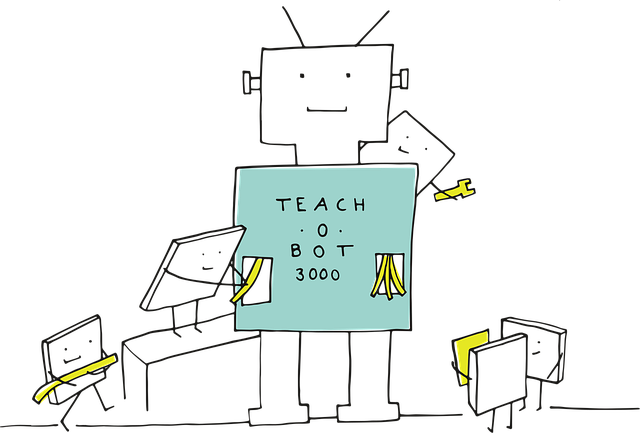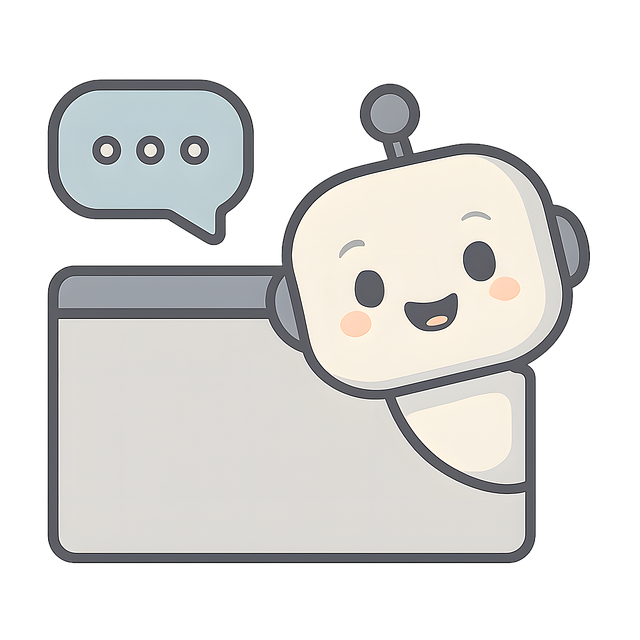How Much Does an AI Trading Bot Cost: Real Prices Explained
Author: Jameson Richman Expert
Published On: 2025-11-02
Prepared by Jameson Richman and our team of experts with over a decade of experience in cryptocurrency and digital asset analysis. Learn more about us.
How much does an AI trading bot cost is one of the first questions traders ask when considering automated strategies. This in-depth guide breaks down real-world price ranges, ongoing expenses, hidden fees, and trade-offs between cheaper off-the-shelf bots and fully custom AI systems. You’ll get actionable examples, a cost-calculation template, security and regulatory considerations, and recommended resources to evaluate or buy a bot that fits your budget and goals.

Quick overview: What this article covers
- Definitions and types of AI trading bots (crypto, stocks, forex)
- Price ranges with realistic examples (free to enterprise)
- Recurring and one-time costs: subscriptions, data, cloud, VPS, exchange fees
- Custom development costs and what drives them
- ROI considerations and cost-benefit analysis
- Checklist to choose a bot and reduce hidden costs
- Further reading and authoritative resources
What is an AI trading bot?
An AI trading bot is software that places orders and manages positions using algorithmic rules, machine learning models, or artificial intelligence techniques. It can range from rule-based automation (moving averages, RSI) to advanced machine learning models (neural networks, reinforcement learning) that adapt to market patterns. For background on algorithmic trading concepts, see Algorithmic trading — Wikipedia.
Types of AI trading bots and typical use-cases
- Off-the-shelf SaaS bots: Cloud-hosted, subscription-based, popular for crypto trading.
- Open-source/free bots: Community-developed projects requiring setup and maintenance.
- One-time licensed software: Pay once, self-host; often used for desktop trading in stocks/forex.
- Custom-built AI bots: Tailored solutions built by developers/data scientists—best for institutional strategies.
- Hybrid solutions: Off-the-shelf bots extended with custom indicators or risk management modules.

Price ranges: How much does an AI trading bot cost in practice?
Costs vary widely depending on capability, support, data needs, and deployment model. Below are realistic ranges with examples.
1. Free / Open-source ($0 – $200 initial, higher maintenance)
Open-source platforms such as Gekko or Freqtrade can be used for free. You’ll typically pay for a VPS and possibly market data. If you use a pre-trained strategy or community signals, initial outlay can be negligible.
- Software license: $0
- VPS: $5–$40/month
- Market data (optional): $0–$50/month
- Estimated realistic first-year cost: $60–$800
2. Consumer SaaS bots (Beginner to Intermediate): $10 – $200/month
Popular crypto bots (3Commas, Cryptohopper, etc.) charge monthly subscriptions with tiered pricing. You get a user-friendly dashboard, integrations with exchanges, pre-built strategies, and cloud hosting.
- Subscription fees: $10–$200/month
- Exchange fees: per-trade (varies by exchange)
- Estimated first-year cost: $120–$3,000
These platforms often accept or recommend connecting to major exchanges. If you’re opening an account, consider verified exchanges like Binance, MEXC, Bitget, and Bybit.
3. Professional / Institutional SaaS: $500 – $5,000+/month
Advanced platforms for high-frequency, multi-asset trading and institutional clients charge premium fees. They include low latency connections, analytics, team support, and compliance features.
- Subscription or license: $500–$5,000+/month
- Colocation/low-latency connectivity: extra $2,000–$10,000+/month
- Estimated first-year cost: $6,000–$100,000+
4. Custom development: $20,000 – $1,000,000+
Building a custom AI trading bot from scratch — data engineering, model training, backtesting environment, production deployment — is the most expensive route but gives full control and proprietary edge.
- Prototype (MVP): $20k–$100k
- Production-grade system (including risk systems, monitoring): $100k–$1M+
- Ongoing maintenance and model retraining: 15–30% of development cost per year
Detailed cost components explained
To calculate total cost, account for more than the software license. Here are the components that determine final spend.
Software licensing / subscription
Either a recurring cost for SaaS or a one-time payment for licensed software. Higher price tiers often remove API limits or offer faster execution.
Data costs
Quality historical and real-time market data is essential for AI models. Cheap or free tick-level data may be insufficient. Expect:
- Basic crypto spot data: free to low cost
- Professional market data (tick-level, institutional): $100s–$10,000s/month
Compute and hosting
Model training requires GPU/CPU resources. Production bots need reliable hosting:
- VPS/shared cloud: $5–$50/month
- Dedicated servers or GPU instances for training: $500–$5,000+/month
- Colocation/high-frequency connectivity for HFT: $2,000–$20,000+/month
Exchange fees and slippage
Every trade incurs fees and slippage. High-frequency strategies that place many small trades can see fee costs accumulate. Choose exchanges with competitive maker/taker fees; for crypto, see the exchanges linked above.
VPS, redundancy, and monitoring
Production reliability needs redundant systems, monitoring, alerting, and fail-safe mechanisms. Budget for monitoring tools (e.g., Datadog), backup servers, and incident response.
Development and maintenance
AI systems require ongoing development, model validation, and retraining to adapt to market regimes. This may be contractor or full-time staff costs.
Security and compliance
Secure key management, encryption, and compliance audits cost money but are non-negotiable, especially if real funds are managed.
Key factors that drive cost
- Strategy complexity — simple rule-based bots are cheap; deep learning models cost more.
- Frequency of trades — HFT strategies need low latency infrastructure and thus higher bills.
- Asset class — equities and futures may require market data exchange fees; crypto is often cheaper for data but still has liquidity considerations.
- Development quality — well-tested, production-ready systems with risk controls are pricier.
- Support and SLAs — enterprise SLAs and support add to cost.

Crypto bots vs Stocks/Forex bots — cost differences
Crypto bots are generally cheaper to start due to open APIs and free market data. Stocks and futures often require paid data feeds (e.g., NYSE, NASDAQ, CME) and exchange memberships for low-latency access.
See a clear technical walkthrough of how crypto transactions work at Bitcoin transaction process explained if you’re focused on crypto bots.
Concrete example cost breakdowns
Example A — Hobby crypto trader using a SaaS bot
- Subscription: $30/month
- VPS/backtesting server: $10/month
- Exchange fees (monthly): $15 (low volume)
- Annual total: (~$660)
Outcome: Suitable for automated rebalancing or grid strategies for low-to-medium volumes.
Example B — Quant startup building an AI crypto strategy
- Initial development: $80,000 (model + backtest + infra)
- Cloud compute for training: $2,000/month
- Market data: $500/month
- Operations & security: $2,000/month
- First-year total: ~$120,000+
Example C — Institutional low-latency provider
- Custom engine + colocation + market access: $500,000+
- Ongoing monthly ops: $50,000+
How to calculate ROI and payback period
To evaluate cost-effectiveness, estimate expected average monthly net profit after fees and compare to total costs including development amortized and operating expenses.
Simple ROI formula:
Monthly net profit (after exchange fees & slippage) / Monthly operating cost
Example:
- Monthly gross P&L from bot: $2,500
- Exchange fees & slippage: $250
- Operating cost (subscription + VPS + data): $200
- Net monthly profit: $2,050
- If initial development was $24,600 amortized over 12 months = $2,050/month, then net after amortization = $0 (breakeven in year 1)
Always test extensively on historical and simulated data to estimate forward returns realistically. Investopedia’s article on algorithmic trading offers useful conceptual background: Algorithmic trading — Investopedia.

Hidden costs and common pitfalls
- Unrealistic expected performance: Many vendors show best-case backtests that ignore slippage and fees.
- Data quality issues: Free historical data often has gaps causing false confidence.
- Overfitting: AI models that fit past data may fail in live markets, leading to losses and costly retraining.
- Integration and API changes: Exchanges update APIs and can break bots, requiring urgent developer time.
- Security incidents: Poor key management can lead to theft; costs include direct loss and reputational damage.
Checklist: How to choose an AI trading bot that fits your budget
- Define objectives: trade frequency, target returns, maximum drawdown
- Estimate volumes to calculate exchange fees and slippage
- Decide between SaaS vs self-hosted vs custom build
- Verify backtest methodology, out-of-sample testing, and walk-forward validation
- Confirm support, disaster recovery, and security practices
- Ensure access to reliable market data and logging for auditability
- Start small with a sandbox account or low capital and scale after positive live results
Security, legal, and compliance considerations
AI bots require robust security for API keys, credentials, and operational controls. If you run bots for other people or solicit capital, you may cross into regulated activity—check local laws and regulatory guidance. For investor-protection resources, consult Investor.gov (SEC’s investor education site).

How to reduce costs without sacrificing quality
- Start with an open-source framework and add only necessary modules
- Use spot instances or reserved instances for cloud compute to save on training costs
- Leverage pre-built connectors for exchanges (most major exchanges provide REST/Websocket APIs)
- Focus on data efficiency — use curated datasets rather than buying every feed
- Use staged rollout: paper-trade, small capital live, then scale
Real-world resources and further reading
If you’re launching into crypto algorithmic trading, comprehensive learning resources and strategy libraries help reduce mistakes. For a broad crypto trading primer, check this Complete Crypto Trading Guide PDF for 2025.
For strategy-specific research and unusual assets, reading deeper analysis (for instance specialized token forecasts) can inform risk management — see an example market analysis at Donald Trump Coin price prediction for 2025 (example of token-level research).
If you’re curious about airport logistics or traveling while running trading operations remotely, keep operational constraints in mind — here’s a travel logistics guide example: Can I walk from Terminal 1 to Terminal 3 at Pearson — guide.
Technical foundations for crypto transactions are useful for understanding on-chain bots or wallets; read Bitcoin transaction process explained.
Connecting bots to exchanges: recommended exchanges
If you plan to connect a bot, choose exchanges with robust APIs, liquidity, and security. Popular options include:
- Binance — deep liquidity, broad markets
- MEXC — wide token selection
- Bitget — derivatives & copy trading features
- Bybit — derivatives, low latency
Always use API key restrictions (IP whitelisting, read-only keys for backtesting, withdrawal-disabled keys for production) and monitor account activity.

Final advice: balancing cost and capability
When answering "how much does an AI trading bot cost," think in total cost of ownership rather than just license price. Cheap solutions can be effective for learning and small-scale automation; advanced AI requires meaningful investment in data, compute, and engineering. Begin with clear objectives, conservative capital allocation, and a staged growth plan. Measure forward performance with strict risk controls before committing large capital.
Action plan — 6 steps to move forward
- Define trading goals and acceptable drawdown.
- Choose a path: SaaS (fast) vs open-source (cheap) vs custom (best fit).
- Estimate monthly operating budget for data, hosting, and fees.
- Validate strategies via walk-forward testing and paper trading.
- Start with small capital and rigorous monitoring.
- Scale infrastructure and budget only when consistent live edge is proven.
Closing — What to remember
There is no single number that answers "how much does an AI trading bot cost." Expect to spend anywhere from under $100/year for hobby setups to hundreds of thousands (or more) for production-grade AI systems. Evaluate total cost of ownership, scrutinize backtests, and prioritize security. Use the resources and exchange links in this guide to research, test, and deploy safely.
Further reading and authoritative resources: Artificial intelligence — Wikipedia, Investor.gov (SEC).